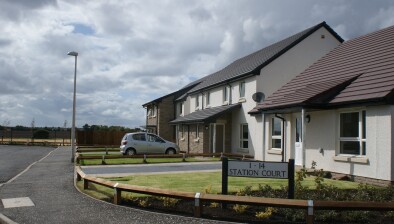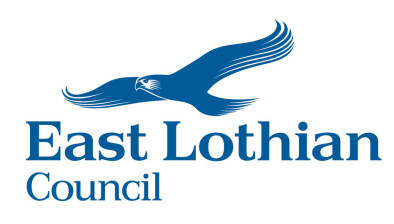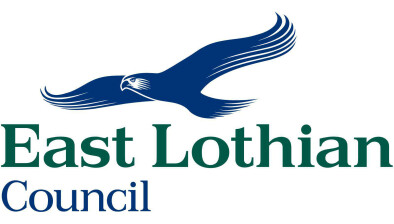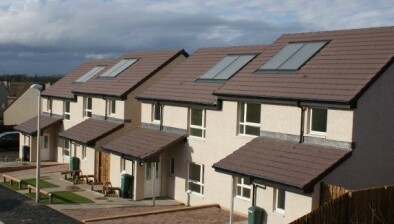Five-year financial strategy agreed by East Lothian Council
East Lothian Council has pledged to ensure rent levels remain affordable for tenants as councillors agreed to updated financial and capital strategies for the next five years.

Council leader Norman Hampshire
The financial strategy aims to support an extensive transformation programme that protects essential services in the face of mounting financial challenges and recognises that, as a result of the Covid-19 pandemic, the council must review how it uses assets such as buildings to support the way services are delivered, and maximise its income.
Maintaining good financial control, continuing to progress opportunities for partnership working and focusing on prevention and early intervention to reduce inequalities, are other important aspects of the strategy.
The council will also continue to support a capital investment programme aligned to local priorities, work to stimulate economic growth and minimise borrowing.
Council leader Norman Hampshire said: “Every household in East Lothian will recognise the importance of the council having clear plans in place to continue managing its finances effectively, while focusing on priorities such as protecting and enhancing the environment, giving children and young people the best possible start in life and supporting those who are vulnerable.
“The council tax paid by local householders contributes around a quarter of the money we need for our revenue budget, with the majority of funding coming from national government. But funding pressures have continued to grow, and with rising demand and increased costs, the amount of funding available to us is not keeping pace with the scale of service provision.
“These challenges have been compounded by the impacts of the COVID-19 pandemic.
“That’s why the council needs to build on its work to be increasingly entrepreneurial, efficient and effective.
“Our five-year financial strategy gives us a strong platform on which to build, in order to deliver critical services in a way which continues to be sustainable and meets the needs and expectations of our communities.”
Although subject to a separate budget, the local authority said the financial strategy for management of its housing budget will focus on ensuring rent levels remain affordable for tenants, working with partners to deliver affordable housing needs, reducing rent arrears and delivering a new housing management system to improve forward planning and deliver improved customer service.
Meanwhile, the capital investment strategy provides an overview of how capital expenditure plans, capital financing and treasury management activity contribute to the necessary infrastructure supporting local services. Its purpose is to firmly place decisions around borrowing in the context of the overall longer-term financial position of the council and to provide improved links between the revenue and capital budgets.
Holding an adequate level of reserves to meet unexpected costs is a key management tool for delivering the financial strategy, the council added. In determining medium term financial plans and preparing budgets, the council said it needs to consider the establishment and maintenance of reserves in accordance with its statutory powers.
Councillor Hampshire added: “It is important for councils to hold reserves as a measure of financial security. This is particularly important for unexpected events or emergencies which cannot be anticipated.
“While we have previously used reserves to help balance the annual budget, this is not seen as a prudent practice in terms of managing recurrent expenditure.
“We need to be able to maintain reserves in order to be resilient and ensure we are delivering effective financial planning in the interests of communities who depend on our essential services.”
Councillors also received an update on budget development for the 2022-23 financial year, with details of specific government funding allocations for councils expected to be available later this month.
Draft budget proposals are expected to be considered by cabinet in January 2022, with the option of amendments being submitted before a full council meeting to agree the budget for 2022/23 (including the setting of council tax and rent levels) is held on March 1.
The announcement comes as the council released a summary of its performance against the four main objectives of the East Lothian Council Plan 2017-2022
The Council Plan committed the council to four objectives to make East Lothian a better place:
- Growing its Economy
- Growing its People
- Growing its Communities
- Growing the Capacity of the council to deliver
Council leader Norman Hampshire said: “The Annual Report outlines the progress the council has made towards achieving its objectives and commitments but it is very clear how the impact of the COVID-19 pandemic has greatly affected this progress.
“East Lothian Council, following the declaration of the pandemic in March 2020, invoked its Business Continuity Plans which prioritised our front-line services such as protective services, education, waste services, and social services. We also activated our Resilient Communities groups whose collective efforts helped us to protect vulnerable children, older people and those most at risk from the virus.
“As the past year has been so dominated by the pandemic it is difficult to fully assess how the council has performed against its set objectives but the council also monitors how well it delivers its services using a range of performance indicators which helps to set targets and to measure the local authority against similar sized councils. Of the comparable data that has been available East Lothian Council has either maintained or improved in performance in 68% of these indicators with 32% showing a decline in performance
“Again, the impact of the pandemic has very much influenced some of the reduced performances such as an increase in anti-social behaviour and COVID related calls, particularly during lockdown periods. The council is now focussing on post-pandemic recovery and there are already signs of some improvements. Although unemployment in East Lothian increased from 2.6% in March 2020 as the pandemic started to 5.4% in March 2021, more recent figures show an improvement reducing to around 4% in July and then to 3.5% by October 2021.
“In common with other local authorities, East Lothian Council has continued to deliver services during a sustained period of tight financial challenges. Additional funding received to support pandemic measures has been welcomed but it’s clear that to maintain our services at current levels we face having to make some very difficult choices if financial plans and budgets are to be balanced.”
The 2021 Annual Performance and ‘State of the Council’ report can be viewed online.








